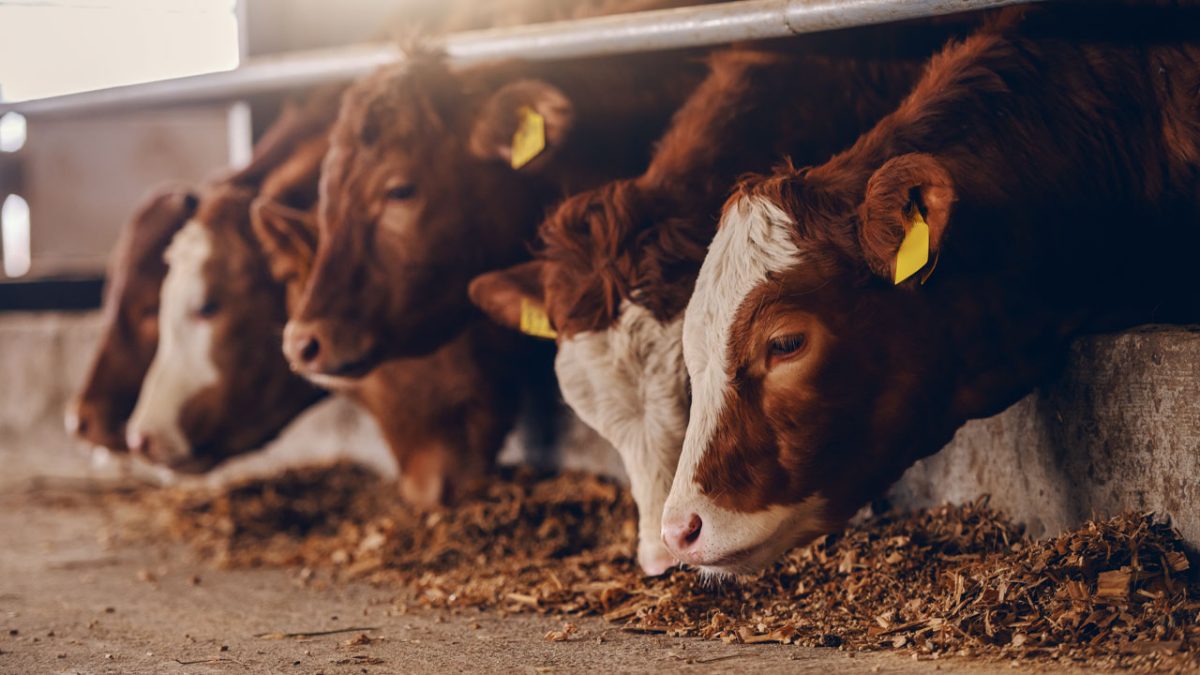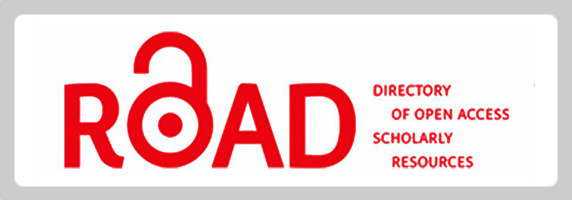Beef Cattle Fattening Practices, Constraints and Opportunities
Abstract
Beef cattle fattening is one of the newly incipient activities. It is a common practice in Ethiopia and special attention was given by the government to boost red meat supply through cattle fattening. In addition to its importance, little is known about its fattening practices, constraints, and opportunities in various parts of Ethiopia. Therefore, the aim of this paper was to review beef cattle fattening practices, constraints, and opportunities in Ethiopia. Cattle fattening is an increasing business at different scales in Ethiopia. Traditional fattening system, Hararghe fattening, and by product-based fattening system are the three common types of beef cattle fattening system in Ethiopia. Farm gates, purchased, owned herd, local market and local farmers are the major source of animals for fattening in Ethiopia. River, tap water, Pond, Rain fall, well water, spring and piped are the key water sources for beef cattle fattening. However, watering frequency is typically depending on feed type, temperature of the environment, age of the animal and usage of the animal for different purposes. Smallholder and commercial producers in the country used multiple selection criteria for fattening of cattle, which includes breed type, physical appearance, castration, sex, age, health and initial price, body condition, coat color and horn size as the major ones. The duration of fattening period varies according to the type of agro-ecology, breed, feeding type, age of animals, sex. Diseases, shortages of feed and water, lack of veterinary services, droughts, market problem and infrastructure, health problems, lack of capital, feed price increment, land Scarcity and genetic factor are among the constraints that hamper efficient beef fattening in the country. However, the major opportunities that enhance beef cattle fattening were demand of meat by consumers, the availability of customers, weather condition, and better housing system, society to be part of the sector, irrigation practices, and breed availability, indigenous beef cattle fattening knowledge and managements, cultural medication of fattening cattle. Therefore, it can be concluded that to improve and motivate beef cattle fattening in the country, the constraints must be solved through focusing on credit provision, strategic disease control, solve feed shortage, market problem and infrastructure, health problems, lack of capital, feed price increment, land Scarcity and genetic improvement.
Downloads
References
Beta, A. M., Basore, B. A., & Boro, H. H. (2018). Assessment on challenges, opportunities and associated health problems of Beef Cattle production systems in Hawassa, Southern Ethiopia. International Journal of Advanced Research in Biological Sciences, 5(11), 103-113. DOI: http://dx.doi.org/10.22192/ijarbs.2018.05.11.012.
Ahmed, K., Tamir, B., & Mengistu, A. (2016). Constraints, opportunities and challenges of cattle fattening practices in urban and peri-urban kebeles of Dessie Town, Ethiopia. Journal of Fisheries and Livestock Production, 4(203). DOI: 10.4172/2332-2608.1000203.
Migibe, A., Minota, K., & Gezahegn, S. (2017). Traditional Beef Cattle Fattening System in Melo Koza Woreda, Gamo Gofa Zone, Ethiopia. ISSN 2224-6088 (Paper) ISSN 2225-0557 (Online), Vol.69, 2017.
Amistu, K., M. Temesgen, A. Alemu, & W. Tarekegn (2016). Assessment of beef cattle fattening and marketing system and contribution to household food security in Lemmo Woreda, Hadiya Zone, Southern Ethiopia.
Asrat, A., Z. Yilma, & A. Nurfeta (2013). Characterization of milk production systems in and around Boditti, Southern Ethiopia.
Melaku, B. M. (2019). Beef Cattle Fattening Practices, Constraints, and Future Potentials in Ethiopia: A Review. Animal Research International, 16(2), 3401–3411.
Bela,Y.S.M. (2009). Feed Resources Availability, Cattle Fattening Practices, and Marketing System in Bure Woreda, Amhara Region. M.Sc. Thesis, Mekelle University, Mekelle, Ethiopia. https://cgspace.cgiar.org/bit stream/handle/10568/672/Thesis_MuluF eed.pdf?sequence=1&isAllowed=y.
Abebe, B. (2019). Cattle Fattening Practices in West Hararghe: Potentials and Constraints of Beef Cattle Production in Oromia Regional State, Ethiopia. Department of Animal Science, College of Agriculture, Oda Bultum University, Chiro, Ethiopia. https://doi.org/10.5539/jas.v11n8p120.
Birhan M., Adane K., Abebe Z., & Habtie B. (2018). Challenges and market opportunities of cattle fattening around Gondar town, Ethiopia. Online Journal of Animal Feed Research, 8(3), 52-58. www.ojafr.ir.
Muleta, B. G., Mummed, Y. Y., & Kurtu, M. Y. (2019). Assessment of Beef Cattle Production and Marketing Practice in Eastern Oromia, Ethiopia. Food Science and Quality Management.
Central Statistical Agency (CSA) (2021/2022). The Federal Democratic Republic of Ethiopia, Agricultural Sample Survey, Volume II Report on Livestock and Livestock Characteristics (Private Peasant Holdings). Addis Ababa, Ethiopia.
Dessalegn, G. (2015). Assessment of Production and Reproductive Performance of Cattle and Husbandry Practices in Bench-Maji Zone, Southwest Ethiopia.
Dinku A. (2019). Assessment of constraints and opportunities in small-scale beef cattle fattening business: Evidence from the West Hararghe Zone of Ethiopia. International Journal of Veterinary Science and Research, 5(2), 058-068. DOI: http://dx.doi.org/10.17352/ijvsr.000042.
Gobezie, E., Bekele, E., & Tadesse, I. (2020). Constraints and Opportunities of Beef Cattle Fattening Practices in Three Selected Districts of Gamo Zone, Southern Ethiopia. Global Veterinaria, 22(3), 128-138.
FAO and IGAD (2019). East Africa Animal Feed Action Plan. Rome.
Food and Agriculture Organization of the United Nations (Rome, 2020).
Gebremichael, T., Gebrewahd, T. T., & Kumar, N. (2017). Assessment of beef cattle fattening practices and its challenges in and around Mekelle, Tigray, Ethiopia. Ethiopian Veterinary Journal, 21(1), 29–39.
Gobena, M. M. (2017). Beef cattle production systems, marketing, and constraints in Ethiopia. Journal of Marketing and Consumer Research, 32, 1–7.
Guyo, D. A. (2016). Assessment of Fattening and Marketing System, and Effect of Concentrate Supplementation with Locally Available Feeds on Fattening Performance of Indigenous Cattle in Bonke Woreda of Gamo Gofa Zone, Southern Region. M.Sc. Thesis, Hawassa University, Hawassa, Ethiopia.
Ayalew, H., Tamru, G., & Abebe, D. (2018). Beef Cattle Fattening Practices and Marketing Systems in Gondar Town, Amhara, Ethiopia. Journal of Veterinary Science & Technology.
Ahmed, K., Tamir, B., & Mengistu, A. (2017). Constraints, opportunities, and motives of cattle fattening practices in urban and peri-urban kebeles of Kombolcha town, South Wollo Zone, Ethiopia.
Milkias, M. (2017). Beef Cattle Production Systems, Marketing, and Constraints in Ethiopia. Journal of Marketing and Consumer Research, 32, 2017.
Mekuria, S. A. (2016). Cattle fattening, constraints, and marketing system in northwestern Ethiopia. World Veterinary Journal, 6(2), 59–65.
Yihunie, M., & Aynalem, Y. (2020). Assessment of the Production System, Constraints, Opportunities of Smallholder Cattle Fattening Practices in Jabitehnan District, Amhara Region, Ethiopia. Forage Research, 46(1), 22-34.
MOA (1996). Ministry of Agriculture. Animal and fishery resources development main department, fattening extension manual, FLDP, Addis Ababa, Ethiopia, pp: 83.
Mohammed Yousuf, Abdi Yusuf (2022). Assessment of Challenges and Opportunities of Beef Cattle Production in Hawa Gelan District, Kellem Wollega Zone, Western Oromia, Ethiopia. International Journal of Animal Science and Technology, 6(1), 21–29. DOI: 10.11648/j.ijast.20220601.13.
Gizachew, N., Goshu, M., Wako, A., & Berhanu, G. (2020). Beef Cattle Production Management Practices and Its Constraints in Arsi Negelle District, Ethiopia. Global Veterinaria, 22(4), 233–241.
Shitahun M, Kefelegn K, Azage T. (2009). Feed Resources Availability, Cattle Fattening Practices, and Marketing System in Bure Woreda, Amhara Region, Ethiopia. Mekelle University, Ethiopia.
Fikru, S. (2015). Assessment of Cattle Fattening and Marketing Practice in Harshin District of Somali Regional State, Ethiopia. Jigjiga University, Ethiopia; P.O. Box 1020, Jigjiga, Ethiopia.
Addisu, S. (2020). Survey on beef cattle production system in Saylem Woreda, southwest Ethiopia. Asian Journal of Medical and Biological Research, 6(1), 99–106. DOI: 10.3329/ajmbr.v6i1.46484.
Gebremichael, T., Gebrewahd, T.T., & Kumar, N. (2017). Assessment of beef cattle fattening practices and its challenges in and around Mekelle, Tigray, Ethiopia. Ethiopian Veterinary Journal, 2017, 21(1), 29-39.
Tessema, T.M. (2016). Assessment of Beef Cattle Production, Management Practices, and Marketing System in Lume District of East Shoa Zone, Ethiopia. MSc Thesis, Hawassa University College of Agriculture, Hawassa, Ethiopia.
Teshager, A., D. Belay, & T. Taye (2013). Traditional cattle fattening and live animal marketing system in different agro-ecologies of Ilu Aba Bora Zone, Oromia, Ethiopia. Global Veterinaria, 10(5), 620-625.
Tsedeke, K. (2007). Production and marketing systems of sheep and goats in Alaba, Southern Ethiopia. M.Sc. Thesis, Hawassa University, Awassa, Ethiopia.
Lijalem, T., Daniel, A., Ermias, T. (2016). Assessment of Beef Cattle Fattening in Selected Districts of Hadya Zone, Southern Ethiopia. Journal of Biology, Agriculture, and Healthcare.

Copyright (c) 2023 Lensa Urgesa

This work is licensed under a Creative Commons Attribution-NonCommercial-NoDerivatives 4.0 International License.










